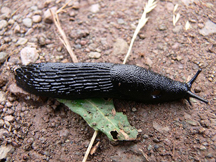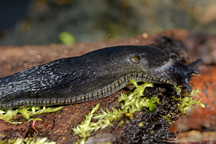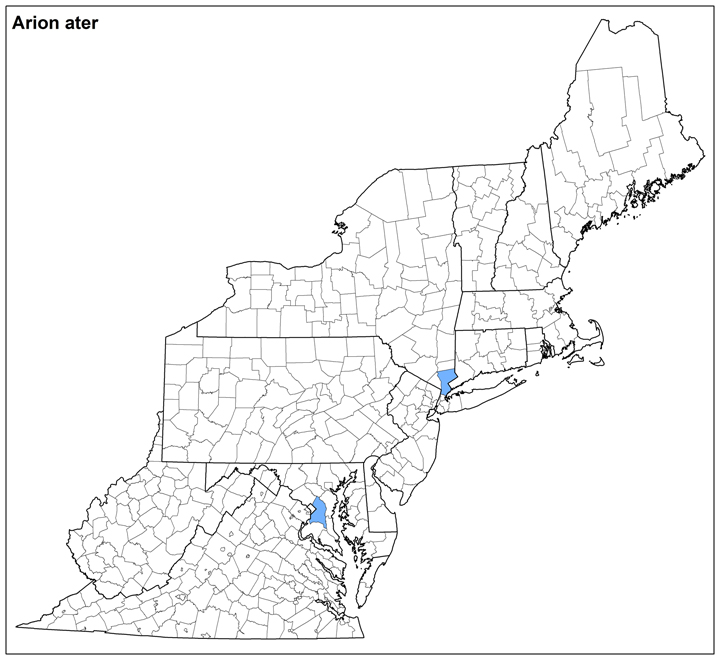Land Snails


Photo: The large Arion ater is often black but may be brown or gray as well. Image © Roy Anderson
Click photo to enlarge.
Arion ater (Linnaeus, 1758) (non-native)
Family: Arionidae
Common name: Black Arion
Identification
Length: 100-150 mm
This large Arion varies greatly in color from black (northerly or mountain forms) to brown, or gray (southerly or cultivated land forms). Its foot fringe tends to be redder than its body and is crossed by dark transverse lines. The skin tubercles are large and the pneumostome prominent. The sticky body mucus may be clear or yellow. Its sole is grey.
Juveniles occasionally have longitudinal bands similar to those of other species of Arion. (Quick, 1960; Kerney & Cameron, 1979). Internally, the atrial ligula is much smaller, thinner, and more symmetrical than that of similar large slug A. rufus (Noble, 1992).
For defense, A. ater may contract its body into a hemisphere and rock from side to side (Kerney & Cameron, 1979).
Ecology
Arion ater occupies lowland forests, hedges, gardens, roadsides, wastelands, and bogs, up to 1800 m in altitude (Quick, 1960; Kerney & Cameron, 1979). Slugs mainly shelter on living plants, with some occupying bare soil, dead plants, or fallen logs (Cameron, 1978). They are omnivores that feed on dead and live plants, fungus, dead animals, and feces (Graham, 1955; Chatfield, 1976). They can be significant plant pests (Grimm et al., 2009).
Reproduction occurs throughout the year (Grimm et al., 2009), and slugs lay up to 150 eggs per clutch (Quick 1960). Individuals may live one or two years (Grimm et al., 2009).
Taxonomy
Synonyms of A. ater are Limax ater and Arion empiricorum.
Distribution
Arion ater is a European species that was introduced to northwest and northeast US and to southeast Canada. In the northeast US, A. ater has been recorded from the vicinity of New York City and Washington, DC. In North America, all slugs in the Arion ater/rufus group were considered A. ater until recently (Grimm et al., 2009), so earlier records should be subject to confirmation.
Conservation
NatureServe Global Rank: G5, Apparently secure.
Megan Paustian 6/2017
Range Map (Click to Enlarge)


